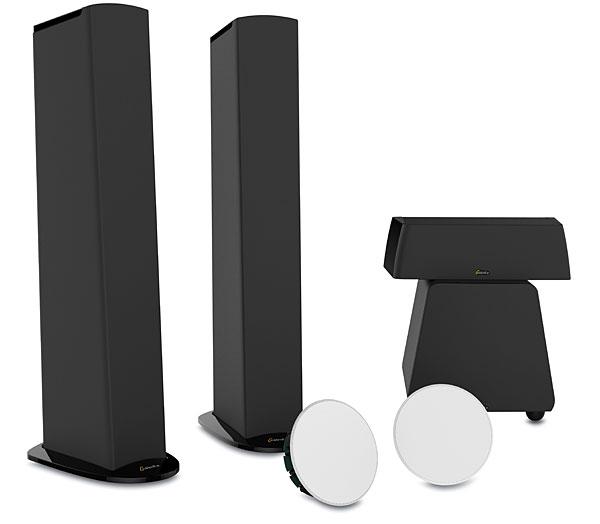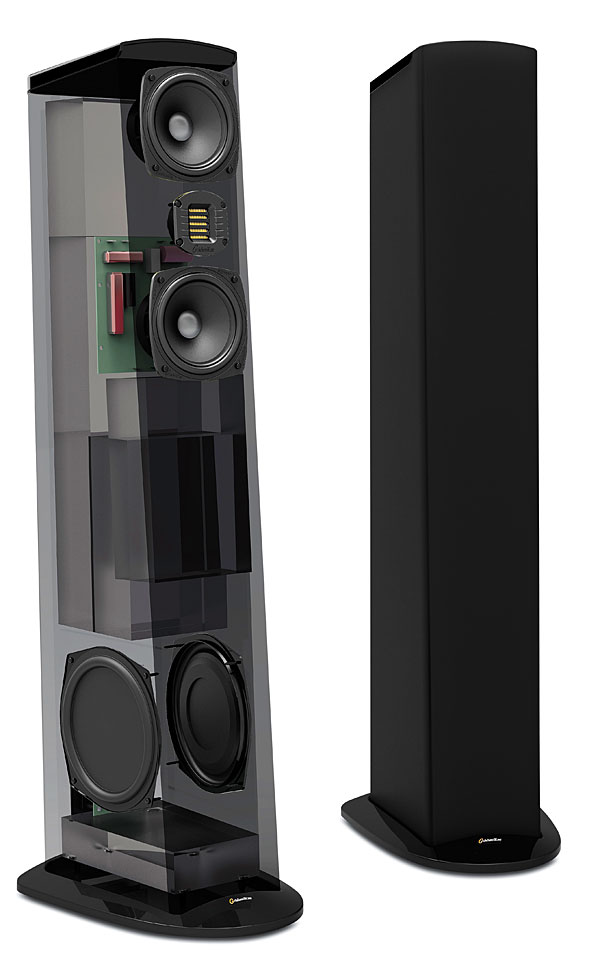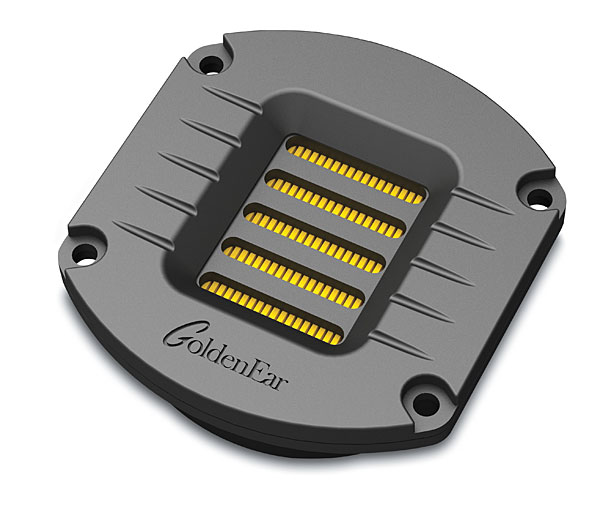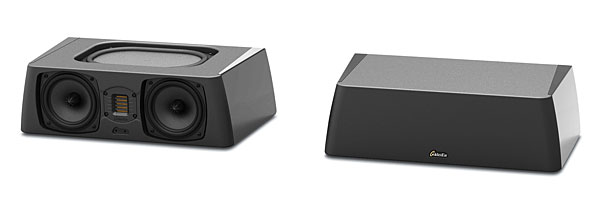It would be great if you guys would do a review of the new supercenters
GoldenEar Technology Triton Seven Speaker System

AT A GLANCE
Plus
Deep bass extension from dual passive radiators
Remarkably full midrange
Rearward rake with non-parallel front and rear
baffles
Minus
You’ll need to find a new home for your current speakers
THE VERDICT
The Triton Sevens provide rock-solid high-end performance for a mid-fi price.
It begins with a fairy tale (of sorts). Once upon a time (say, around 2013), a little company named GoldenEar made three bears—no, sorry, three tower speakers. The first speaker was tall and big with a deep, deep voice. But it was too big and too expensive for a hungry little girl roaming the forest—no, I mean, for some of the people shopping through a forest of tower speakers at the A/V store. The second tower was shorter and a bit smaller. Its voice was deep, too, but not quite as much as the papa tower’s voice. Sadly, it was also too big to fit comfortably in some people’s rooms, and still too big for some of their budgets. Then GoldenEar made a third tower speaker, even shorter and less expensive, and this speaker was… Well, that’s what we’re here to find out, isn’t it?
GoldenEar Technology’s Triton Seven towers are the third and latest addition to the company’s Triton series. In some respects, they’re the most anticipated, too. Previously, the ticket price for the least expensive critically acclaimed Triton tower, the Triton Three, was $2,000 per pair. So when Golden- Ear’s co-founder Sandy Gross began hinting about a new, lower-priced Triton tower, audiophile ears everywhere perked up.
That New-Speaker Smell
I was fortunate enough to get my hands on one of the very first pairs of Triton Sevens to see the light of day—they still had that wonderful new-speaker smell—along with an equally fresh sample of GoldenEar’s new center-channel speaker, the SCX. To complete the system, GoldenEar sent a ForceField 5 powered subwoofer and, for an unusual surround channel twist, a pair of the company’s Invisa 650 in-wall/ceiling speakers rather than the more traditional pair of monitor or on-wall speakers. Although I had several other projects with rapidly approaching deadlines crying for attention, I’m not exaggerating when I say I started cutting the packing tape on the Triton Sevens’ boxes before the FedEx delivery truck had made it all the way out of my driveway.
A couple of features make the Triton Seven an obvious member of the Triton family. Cosmetically, it’s a smaller version of the Triton Two ($1,499/each) and TritonThree ($999/each), with a similar trapezoidal shape that’s 5.75 inches across in the front and gradually opens up to a rear width of 7.25 inches. Both dimensions are similar to the Triton Three, but the Triton Seven’s 40.25-inch height is almost 4 inches shorter than its next-smallest sibling. At 11 inches in depth, it’s also 2 inches shallower. So, in total, the Triton Seven ($699/each) is about 20 percent smaller in internal volume than the Triton Three, though they create the illusion of being smaller than that because of the noticeable difference in height.

On the inside, behind the black cloth covering the front grille, is another feature that makes the Seven a true Triton: one of GoldenEar’s High Velocity Folded Ribbon (HVFR) tweeters—the same high-frequency driver technology found in the other Triton towers. I’m a big fan of folded-diaphragm tweeters in general because of their light, open, seraphic sound. This technology compresses and rarefies the air by squeezing a pleated, accordion-like diaphragm rather than pushing a diaphragm to and fro as a more common dome-style tweeter does. Although the basic concept was first patented in 1972 by Dr. Oskar Heil and has appeared in various speakers over the years, it’s only been recent advances in materials and manufacturing that have brought updated versions of these tiny transducers out of the dim, obscure reaches of audiophiliac tweakdom and into more accessible realms from companies such as MartinLogan, Legacy, and, of course, GoldenEar.

GoldenEar’s HVFR tweeter is a signature element of every speaker the company makes (except the subs, duh). It’s the same tweeter technology across the lineup, including the architectural speakers in the Invisa Series, which use a slightly smaller, pivoting version. This consistency in design and voicing throughout the various models is a huge reason why the GoldenEar speakers I’ve heard blend together so well in multichannel systems.
Power Outrage
There are some important differences between the Triton Seven and the other towers, however. For one, as an interesting cost-cutting measure, GoldenEar does not ship power cords with the Triton Sevens. Unlike the Triton Two and Three, which include 1,200- and 800-watt amps for the woofer (and power cords!), respectively, the GoldenEar Triton Seven speaker is a completely passive design.
Obviously, being “powerless”— if only in watts, not sonics—is a powerful reason why the Triton Sevens sell for $300 less per speaker than the Triton Threes. Whereas the larger speaker is a three-way design that incorporates a pair of 4.5-inch midrange drivers along with each model’s particular powered woofers and passive radiators, the Triton Seven utilizes two newly designed 5.25-inch woofer/midrange drivers (one above and one below the tweeter) coupled to a pair of side-firing planar passive bass radiators. I must admit I thought it to be a bit strange, going from a design with 800 watts to one with 0 watts—especially when the bass output of the Triton Threes is so impressive—and the Triton Sevens, I was sure, would without a doubt suffer duly in any low-frequency comparison. In my mind, while comparing the Sevens with the Threes, I couldn’t help but picture those new 5.25-inch woofers as if they were Max, the Grinch’s poor, wretchedly overworked, scrappy dog, trying to haul the sleigh loaded with presents the Grinch had stolen from Whoville up to the top of Mt. Crumpit. Of course, that’s a bit extreme, because a heavily laden sleigh is certainly more difficult to move than a pair of 8-inch planar bass radiators, but the image remains. (And now it’s in your mind, too.)

More of the Same
With its slightly angled, gloss-black, side end caps and swaddling black cloth grille, the new $599 SuperCenter X (SCX) center channel appears a bit smaller than its 20-inch width, 5.75-inch height, and 11-inch depth would suggest. It makes full use of the available surface area by packing two 5.25-inch bass drivers and an HVFR tweeter on the front baffle along with a 7 x 10-inch planar passive radiator on the top. The SCX is also a completely passive design, and GoldenEar includes a set of three threaded brass inserts along with three adjustable rubber leveling feet in the box. Interestingly, there are four smartly spaced, pre-drilled holes on the bottom of the SCX. Two of them are for front corner feet, but you get a choice of two options for the third foot that supports the rear of the speaker, one near the back and another toward the middle of the cabinet. Your choice will alter the speaker’s angle of attack, but using the centrally located hole might also allow you to slide the speaker back closer to the screen of a pedestal-mounted TV. That’s a clever design feature that a lot of center channel speakers don’t have.
- Log in or register to post comments


How are these towers compared to the SVS Ultra Tower Surround Speaker System?
I cant decide if I should go with the SVS Ultra Tower or TritonThree. Which are priced the same at $1000 each.
Or perhaps add a $500 more and get a TrianTwo.

I am looking for anyone who has had a direct comparison of the Triton Threes and SVS Ultra's. I have heard the SVS Prime towers and really, really liked them but the powered sub of Triton Three is quite tempting.
k.






























































